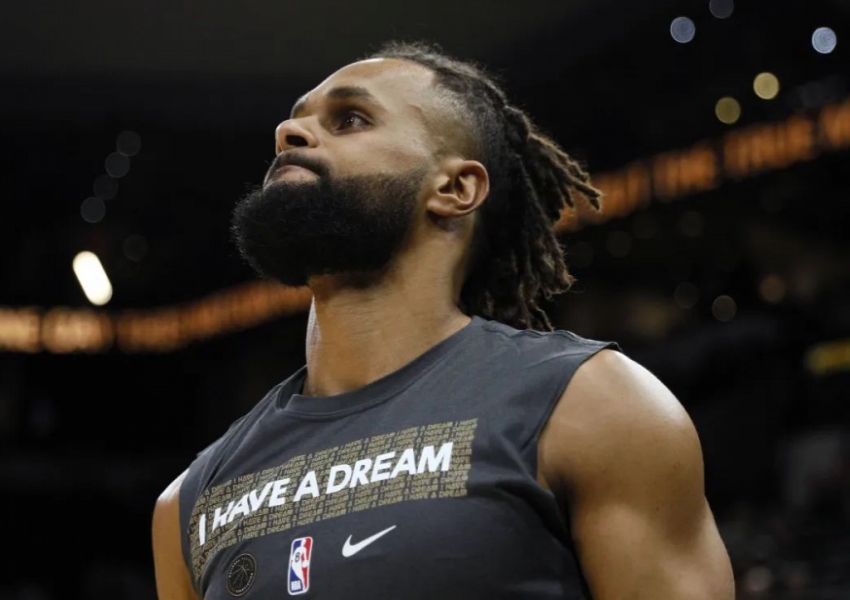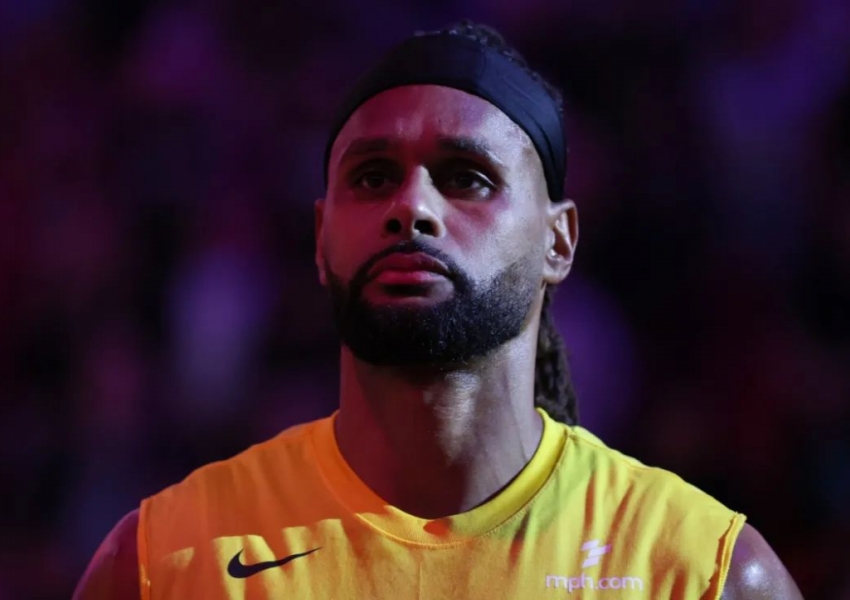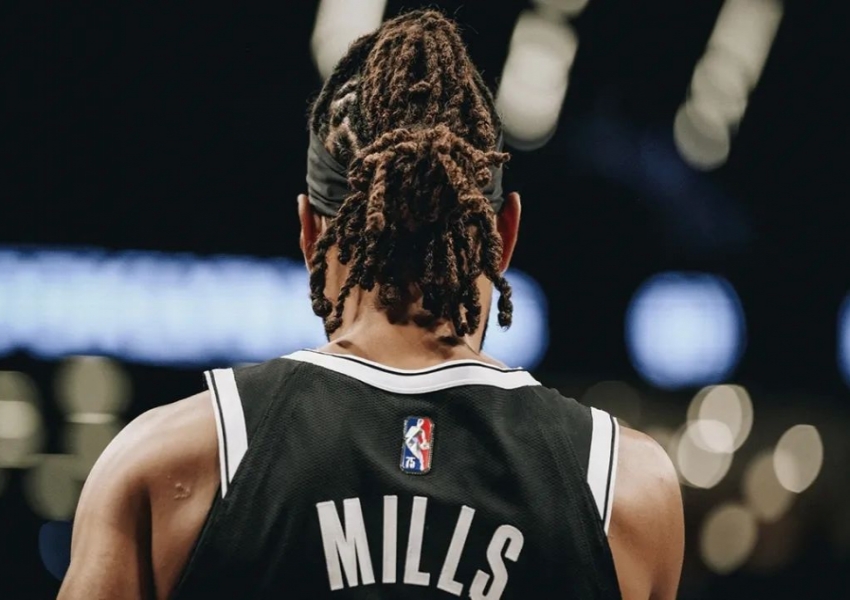Back to the NBA! How Much Fuel Does 36-Year-Old Patty Mills Have Left?
At 36, Patty Mills is set for what could be his final NBA chapter, having signed a one-year, $3.3 million deal with the Utah Jazz. The announcement came just days after his standout performances at the 2024 Olympics, where he led Australia to the quarterfinals, only to fall short against Serbia. While the Boomers’ early exit was disappointing, Mills' efforts were anything but. He averaged 16.5 points, 2.3 rebounds, and 1.3 assists over four games, shooting 41.4% from the field, 40.9% from three-point range, and hitting 100% of his free throws.

Mills’ Olympic performance, especially his clutch plays, undoubtedly influenced Utah’s decision. In the group stage opener against Spain, Mills scored 19 points, including a game-winning three-pointer in the final moments. In the quarterfinal against Serbia, he was sensational in the first half, pouring in 20 points as Australia built a 24-point lead. Despite Serbia’s comeback and eventual overtime victory, Mills finished with a game-high 26 points, including a dramatic, last-second jumper over Nikola Jokic to force the game into overtime.

It's hard to ignore the possibility that Jazz executive Danny Ainge was swayed by Mills’ ability to perform in pressure situations. But despite the heroics, questions remain about how much fuel Mills has left in the tank.

The NBA Journey
Mills' return to the NBA is a testament to his resilience, but it comes after a challenging few seasons. In 2022, Mills signed a two-year, $14.5 million contract with the Brooklyn Nets. The move was supposed to bolster the Nets’ roster with Mills’ experience and shooting prowess. However, the following season proved underwhelming. Mills appeared in just 40 games, averaging 14.2 minutes per game and posting modest numbers: 6.2 points, 1.1 rebounds, and 1.4 assists. His shooting percentages—41.1% from the field, 36.6% from three-point range, and 83.3% from the free-throw line—were respectable but not enough to justify his contract.
The 2023 offseason was turbulent for Mills. Initially traded from the Nets to the Houston Rockets, he was then sent to the Oklahoma City Thunder before ultimately landing with the Atlanta Hawks. His tenure in Atlanta was brief, playing just 19 games and averaging 2.7 points in 10.6 minutes per contest. By March, Mills was waived by the Hawks, ending a difficult chapter in his career. A short stint with the Miami Heat followed, but his impact was minimal, averaging 5.8 points on 33.8% shooting in limited action.
Given his recent struggles, it’s not surprising that Mills remained unsigned for over a month after the NBA’s free agency period began. The NBA is a league that demands consistent performance, and for veterans like Mills, the margin for error is slim.
The Olympic Factor
Mills’ performances on the international stage have always been a major factor in his enduring NBA career. His ability to lead Australia and deliver in high-pressure moments is well-documented. In fact, Mills has become synonymous with Australian basketball, earning the nickname “Aussie Jordan” for his scoring exploits in international competition.
Mills first gained international recognition at the 2008 Beijing Olympics, where, as a 20-year-old, he scored 20 points against the star-studded USA “Redeem Team,” a squad that featured Chris Paul, Jason Kidd, Deron Williams, Kobe Bryant, and Dwyane Wade in the backcourt. Since then, Mills has been a fixture for the Boomers in every major international tournament.
In four consecutive Olympics, Mills has been Australia’s leading scorer, posting averages of 21.2 points (2012), 21.3 points (2016), 22.3 points (2021), and 16.5 points (2024). His most iconic performance came during the bronze medal game at the 2021 Tokyo Olympics, where Mills scored 42 points and dished out 9 assists to lead Australia to a historic victory over Luka Doncic’s Slovenia, securing the country’s first-ever Olympic basketball medal.
The NBA-FIBA Dichotomy
Despite his international success, Mills has struggled to replicate those performances in the NBA over the past few seasons. The difference lies in the contrasting styles of play between the NBA and FIBA. In international competition, Mills is the focal point of Australia’s offense, with the ball in his hands for the majority of possessions. This allows him to utilize his quickness, shooting, and basketball IQ to their fullest extent.
In the NBA, however, Mills has often been relegated to a more limited role. As a smaller guard, he’s typically used as a spot-up shooter or secondary ball-handler, positions that don’t fully capitalize on his strengths. The NBA is also filled with athletic, versatile defenders who can neutralize smaller guards, making it increasingly difficult for Mills to create his own shot or contribute significantly without the ball.
The physical toll of playing in the NBA’s 82-game season is another factor. At 36, Mills’ best days as a dynamic scorer are likely behind him. The question now is whether he can adapt to a new role in Utah, where he’ll face stiff competition for playing time.
Fit with the Utah Jazz
Mills' signing with the Jazz has raised eyebrows, particularly because Utah already has a crowded backcourt. The team boasts a mix of young talent and experienced veterans, including Collin Sexton, Jordan Clarkson, and Keyonte George, as well as rookie Rylan Collier. With so many guards vying for minutes, it’s unclear where Mills fits into the rotation.
Brett Siegel of Sports Illustrated described the Jazz as “one of the most perplexing teams in the NBA,” a sentiment shared by many analysts. The addition of Mills, while potentially valuable for his leadership and experience, doesn’t seem to address any immediate needs for Utah.
One possible scenario is that Mills is brought in primarily for his locker room presence and to mentor the younger guards. His experience, particularly in high-pressure situations, could be invaluable for a Jazz team that is still developing its identity. However, if Mills hopes to see significant playing time, he’ll need to prove that he can still contribute at a high level.
The Final Chapter?
Given the recent trajectory of his NBA career, there’s a strong possibility that the 2024-25 season could be Mills’ last in the league. His declining minutes, coupled with the increased competition for playing time, suggest that Mills may be entering the final stage of his NBA journey.
However, if there’s one thing we’ve learned about Patty Mills, it’s that he thrives in situations where he’s underestimated. Whether it’s stepping up on the Olympic stage or finding a way to contribute in a limited role, Mills has always defied the odds.
For the Jazz, signing Mills is a low-risk move that could pay dividends if he can recapture some of the magic that has made him one of Australia’s greatest basketball players. And for Mills, it’s another opportunity to prove that, even at 36, there’s still gas left in the tank.
Copyright Statement:
Author: focusnba
Source: FocusNBA
The copyright of this article belongs to the author. Reproduction is not allowed without permission.
Recommended Blog
- Officially Announced! ¥800 Million Contract Signed: The Only NBA-Caliber Opponent for China’s National Team
- The Deal Is Done! 22-Assist Maestro Teams Up with Zeng Fanbo: First Major Offseason Transfer Shakes Up the League
- It's Official! Anthony Edwards Steps Down: NBA's New Face Proves He's the Real Deal
- 32 and Retired: Reflecting on Joe Harris' NBA Career
- Zion Williamson and Ja Morant: The Fall of NBA's Future Stars and the Urgent Search for New Faces of the League
- Zhang Zhenlin: From Injury Controversy to China’s Top Forward
- Just Won Gold, Now Switching Teams? Embiid's Decision Sparks Debate
- Done with It! Edwards Refuses to Play, the Next Team USA Will Be Without Him
- Massive Brawl! CBA Off-Season Clash: Qi Lin and Foreign Players Exchange Blows
- Li Chunjiang to Join Shanxi? A 5-Year Ban and the CBA’s Biggest Scandal